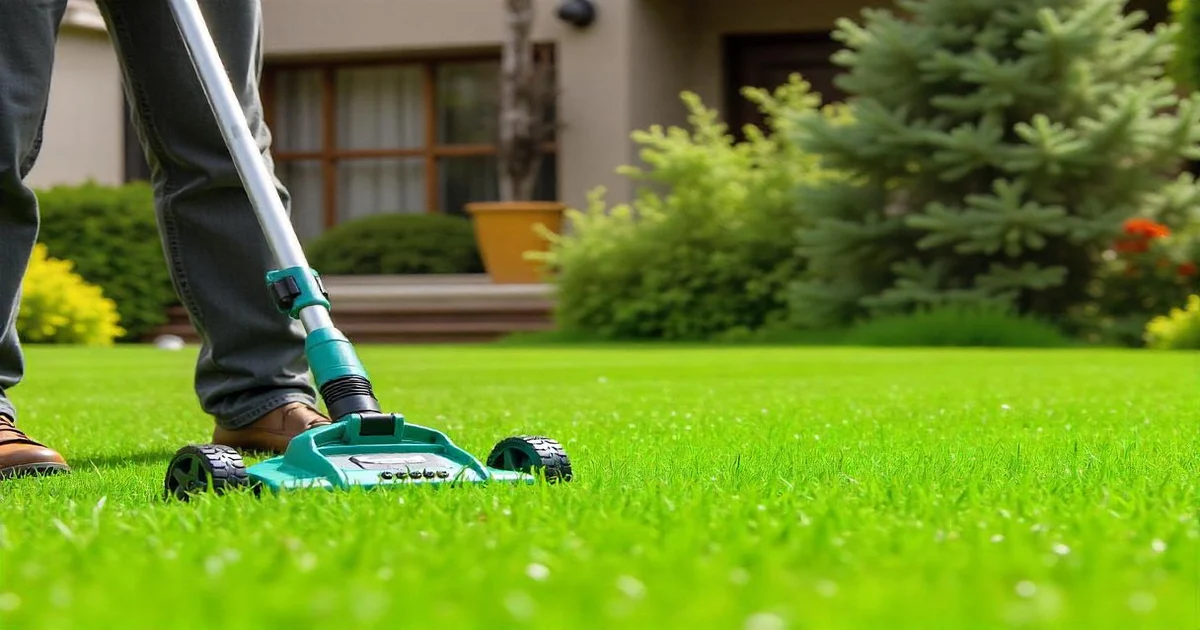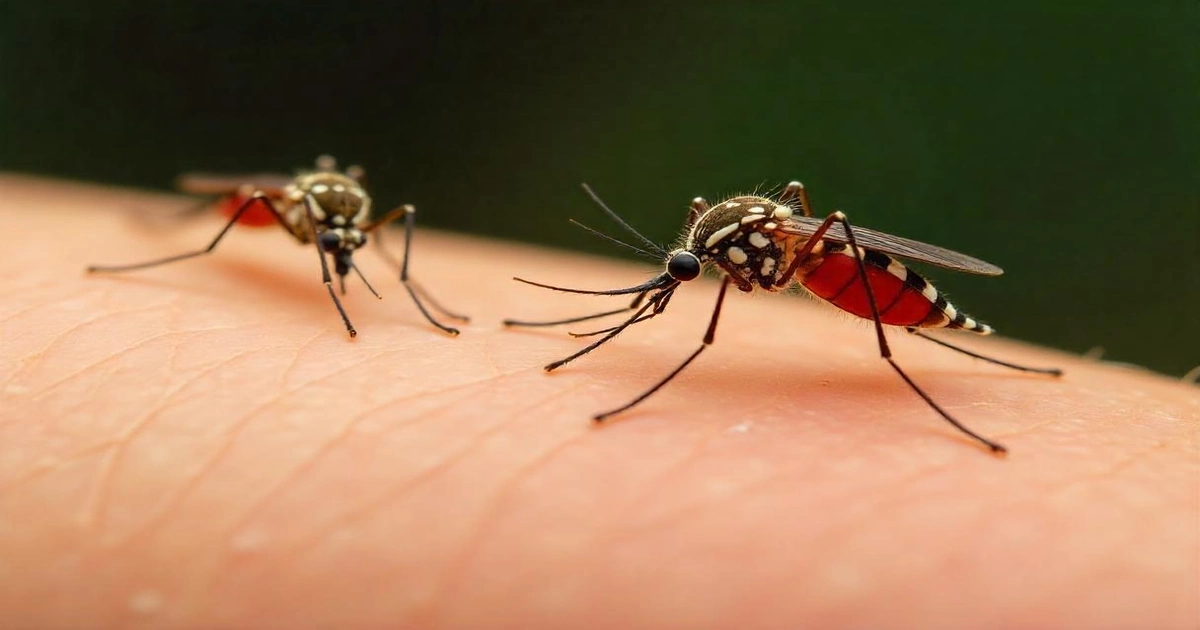Lawn pest control is the process of managing and eliminating insects and pests that threaten the health, appearance, and overall quality of your lawn. From grubs and armyworms to mosquitoes and ants, these unwanted invaders can cause serious damage to grass, soil, and outdoor enjoyment. By using a mix of preventative care, regular lawn maintenance, and targeted treatments, lawn pest control helps protect your yard from infestations and keeps it looking lush, green, and pest-free year-round.
A beautiful lawn can transform any home into the envy of its neighborhood. But nothing thwarts this vision faster than pest infestation – whether grubs chew at roots, ants build mounds unseemly mounds or mosquitoes buzz around – creating havoc to that’s where lawn pest control becomes essential.
In this comprehensive guide, we’ll outline all you need to know about lawn pest control: what it means and which pests to look out for as well as effective prevention measures and how you can treat problems when they arise. Let’s dive right in. Let’s dive right in.
What Is Lawn Pest Control?
Lawn Pest Control refers to the practice of eliminating insects and other pests which threaten the health and appearance of your lawn, such as insects. Pests like these can harm grass blades, roots and soil leading to brown patches, thinner grass cover or dead zones on your grass surface.
Effective lawn pest control entails both preventive and reactive measures. Preventative strategies help thwart future infestations while reactive treatments eliminate current ones.
Types of Lawn Pests
Knowing what pests exist is half of the battle against lawn issues. Here are three of the most prevalent lawn pests, their effects and solutions:
1. Grubs
Grubs are larva produced by beetles such as Japanese beetles or June bugs which feed on grass roots leading to dead patches, drought stress and increased drought susceptibility.
Signs of grub infestation:
- Spongy grass that lifts easily like carpet
- irregular brown patches Signs include birds or moles present indicating infestation
- Increased presence of birds/moles
2. Armyworms
Armyworms are caterpillar-like insects that feed on grass blades, devouring large areas of lawn in just hours.
Signs of armyworms:
- Rapidly expanding brown patches
- Sightings of striped larvae
- Presence of moths flying above your yard
3. Chinch Bugs
These small black and white insects feed off of grass sap to leave yellow or brown patches behind them, commonly found on warm-season grasses such as St Augustine:
Signs:
- Dry patches that don’t respond to watering
- Gradual expansion of dead zones
4. Sod Webworms
Sod Webworms Sod Webworms (larvae of moths) create silk-lined tunnels in the soil to feed on grass blades.
Indicators:
- leaving chewed tips at their tips
- Moths flying low over your lawn during dusk whilst feeding (low flying moths or during dusk when moths fly low over)
5. Ants
Ants do not always damage grass directly; their mounds can, however, wreak havoc with lawn surfaces and interfere with mowing operations.
Signs of ant infestation:
- Visible mounds
- Ant trails along sidewalks or patios
6. Mosquitoes
Mosquito bites though mosquitoes won’t do any significant damage to the lawn, mosquitoes can still ruin outdoor enjoyment by spreading quickly throughout.
How they spread:
- Standing water in the yard
- Tall grass and shaded areas
Signs You Need Lawn Pest Control
Warning signs to look for that could indicate pest problems:
- Patches of discolored or dead grass
- Holes or tunnels appearing in your lawn
- Increased animal activity like birds, squirrels or raccoons invading.
- Insect sightings on grass blades or flying above
- Grass that pulls up easily without resistance
The sooner you recognize these signs, the faster you can act and save your lawn.
How to Prevent Lawn Pests
Preventative lawn pest control begins with maintaining lawn health:
1. Maintain Lawn Health
A strong, healthy lawn is less prone to pest infestation:
- Mow regularly and keep blades sharp
- Water deeply but infrequently
- Fertilize according to grass type and season mess
2. Clear Thatch
Thatch refers to the layer of dead grass and roots between soil and grass blades; too much thatch can harbor pests and cause disease problems:
- Dethatch in spring or early fall
- using either a manual dethatching rake or mechanical dethatched for best results
3. Aerate the Soil
Compacted soil puts stress and pest infestation at an all-time high and should be aerated at least annually (spring or fall):
- Aerate once a year (spring or fall)
- Using an efficient core aerator aeration machine for best results
4. Eliminate Standing Water
Mosquitoes and other insects thrive in stagnant water sources such as gutters.
- Clean gutters
- To combat mosquito populations and keep your yard tidy, gutters need to be regularly cleared of debris
- low spots in your yard need filling
5. Keep Your Yard Clean
Remove leaf litter, sticks and debris that provides hiding places for pests to nest or hibernate
- Reassemble leaves each fall
- prune overgrown shrubs and trees
Lawn Pest Control Treatments
DIY Lawn Pest Control
For minor infestations or prevention measures, do-it-yourself approaches:
- Need oil spray (natural pesticide)
- beneficial nematodes for controlling grubs
- Diatomaceous earth for crawling insects etc.
- Garlic or peppermint oil sprays to repel mosquitoes
To make homemade repellant spray, mix 1 part garlic juice to 5 parts water and spray around your yard.
Chemical Lawn Pest Control
For persistent lawn pest problems, chemical treatments may be required:
- Imidacloprid or carbonyl for killing grubs Insecticides
- Insecticides Bifenthrin can control chinch bugs
- Bacillus Thuringiensis (But) can control caterpillars
Tip: Always adhere to label instructions when applying chemicals in order to minimize potential damage caused by over dosage.
Conclusion
Pest control doesn’t just consist of spraying chemicals – it involves prevention, identification and treatment as part of an integrated approach to outdoor maintenance. By practicing healthy lawn habits and acting quickly at any sign of infestation in your garden or lawn space you can keep most common lawn pests under control while enjoying an aesthetically pleasing green space all season long.
whether using DIY techniques or professional services; both will bring success in creating an inviting space where family, neighbors and guests alike will gather.
FAQs
What is the ideal time and season to treat my lawn for pests?
Late spring to early summer are ideal, although timing depends on the pest type. Grubs, for example, should be treated in late summer when they’re most active near the surface.
At what frequency should I apply lawn pest control treatments?
This depends on the product used. Some require reapplication every 30 days, while others last a full season. Always follow the product label instructions.
Are natural pest control methods effective?
Yes, natural options like beneficial insects, essential oils, and organic treatments work well for minor pest problems when applied consistently and correctly.
Can I mow after applying pesticide?
It’s best to wait 24 to 48 hours after applying any lawn pesticide to allow full absorption into your grass and ensure the treatment’s effectiveness.
Is lawn pest control safe for pets and children?
Most commercial treatments are safe once dry, but always read labels carefully. Opt for pet- and child-friendly or natural solutions whenever possible.
Why are pests coming back?
Re-infestation often results from poor lawn maintenance, nearby untreated areas, or changing weather. Ongoing management and routine treatments are essential for control.
Which grass types are susceptible to pest infestation?
Warm-season grasses like Bermuda, Moesia, and St. Augustine attract armyworms and chinch bugs, while cool-season grasses are more prone to grubs and webworms.








